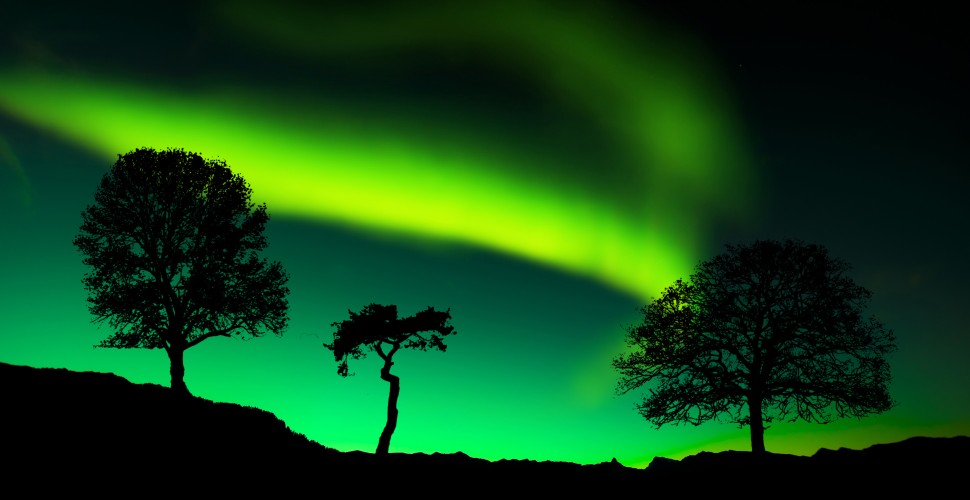The Northern Lights: What, Where & When?
Like whales, dolphins and the Loch Ness Monster, seeing the aurora borealis can be a rather hit-and-miss affair. This is especially the case in the UK.
Although there has been an increase in displays of the Northern Lights across our skies here in the UK in recent years, this can be attributed to being in the peak of the 11-year solar cycle.
This current peak, according to the Royal Astronomical Society, is expected to last until mid-2025.
If you really want to see the famous dazzling green-and-red hues above the Earth, then you will have to go a little further north.
Before you go aurora borealis spotting…
You had better not embarrass yourself in the presence of other Lights-spotters by not knowing why the northern skies are occasionally bathed in pretty, colourful lights.
So here's the science:
Energetic charged particles, borne on the solar wind, collide with atoms in the Earth's atmosphere (directed by our planet's magnetic field) burning gases in the process and (sometimes) causing a spectacular light storm of red, green, yellow, pink and blue.

Where can I see the Northern Lights?
Iceland
You won't get much light pollution in Iceland, thanks to its small population and few settlements. A number of operators can take you to remote locations where you'll have a good chance of seeing a light show. Luxury and kind-of-budget options are available.
The great thing about choosing Iceland as your destination, is that after an evening of chasing the Northern Lights, you can spend the following day relaxing on one of Iceland's many hot springs!
Sweden
As such a large country there are naturally a lot of good locations from where you might view the Northern Lights. Bjorkliden in the north is a popular spot thanks to its location in a weather shadow, caused by a nearby mountain range. Ideal for Lights-spotters.
Norway
Tromso, one of Norway's key northern cities, is surrounded by plenty of good locations to see the Lights, as is Sollia on the Norway-Russia border.
Aside from Northern Lights spotting, Norway is a great destination to visit in winter, with plenty to see and do.
Finland
In the Finnish part of Lapland you can go Lights-seeking whilst cross-country skiing or dog-sledding; or you might try a night trek on snowshoes, a snowmobile trip, or simply an old fashioned minibus tour.
Don't forget your winter sports travel insurance if applicable to your snowbound activities.
What’s more, With 200 days of snow a year, the Finnish part of Lapland is a white Christmas paradise. – A great excuse to time your Northern Lights adventure with a festive getaway!
Scotland
Your best chance of seeing the Lights on these isles is to be found in Scotland. A range of light-and-star-gazing walks are available.

What are my chances of seeing the Northern Lights?
Wherever you go, you are not guaranteed a sighting of The Lights. But if you choose the above locations, ideally between early October and late March, you'll give yourself a very good shot indeed.
Whichever location you choose to visit for your Northern Lights spotting adventure, don’t forget your camera! While the Northern Lights are visible to the naked eye, a camera will bring a whole new perspective to your Northern Lights Show!
Why are the Northern Lights more visible on a camera?
Viewing the Northern Lights with the naked eye, the colours often appear faint compared to those captured by camera, the pink and red hues in particular. This is because our eyes are not very adapted at seeing things in the dark. In contrast, the longer exposure of a camera when in night mode collects light for longer, which gives a stronger sense of the colours of the Aurora Borealis
Get a Quote